Bucheinbände aus meinem ehemaligen Bestand antiquarischer Bücher
Bucheinbände
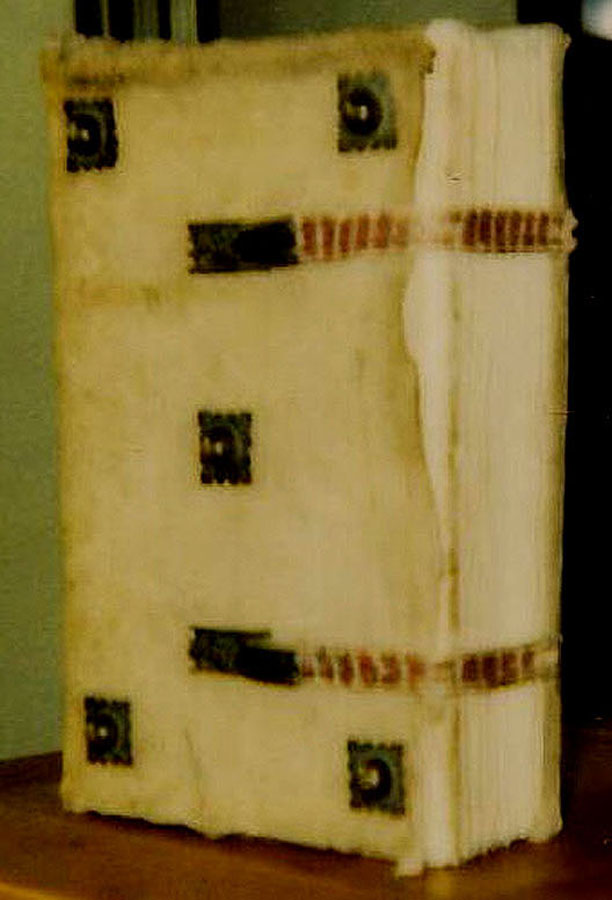
Johannes Merkelin
Liber de instructione simplicium sacerdotum
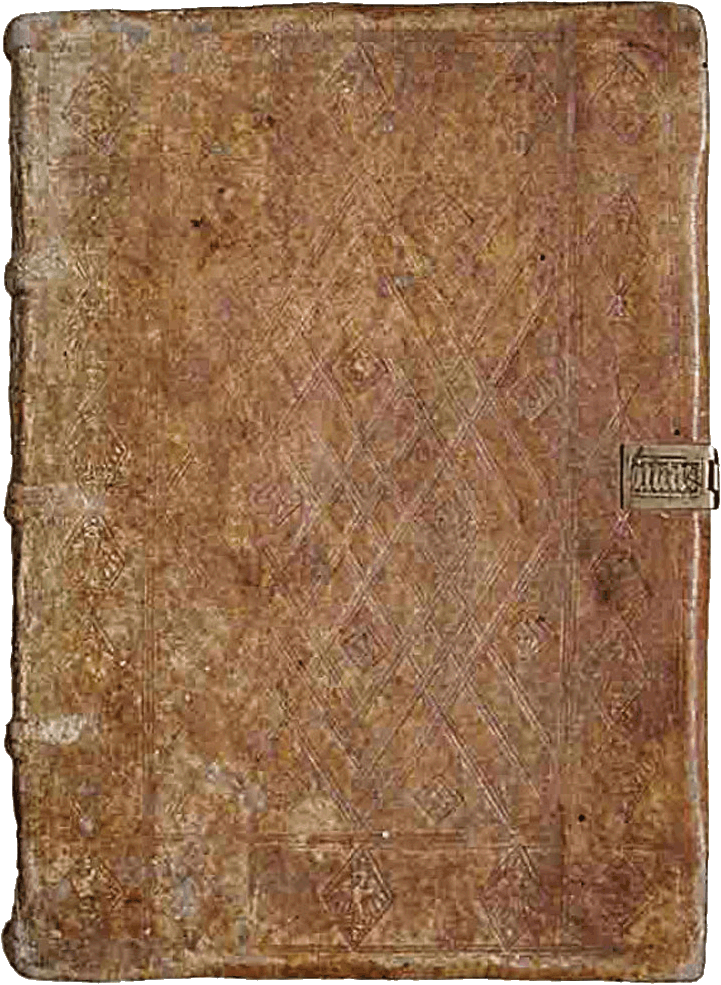
Johannes Nider
Die vierundzwanzig goldenen Harfen

Εὐϱιπίδης, Euripides
Τραγῳδίαι ἑπτακαίδεκα

Gaius Plinius Caecilius Secundus
Epistolarum libri decem
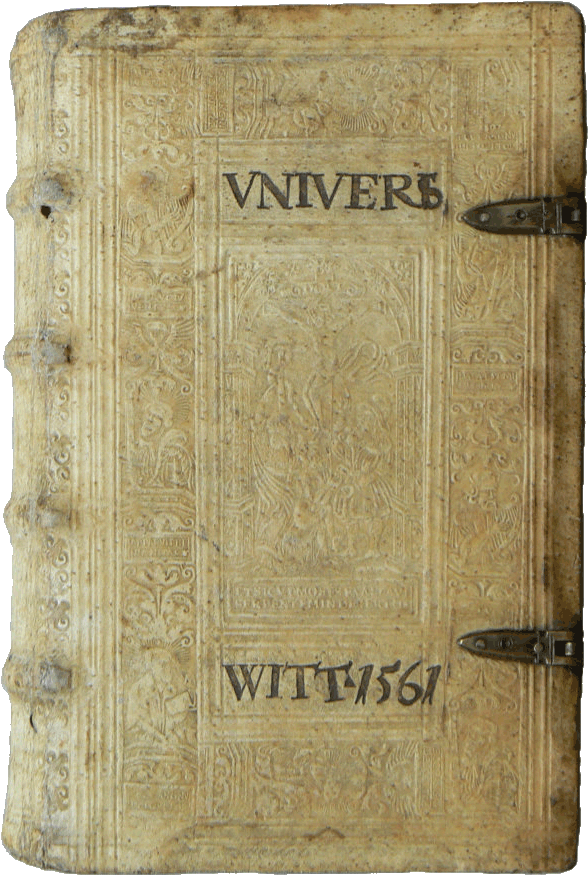
Lucius Caecilius Firmianus Lactantius
Divinarum Institutionum libri septem

Lucius Flavius Arrianus
Aρρianoy πepi Aλeξanδpoy anabaσeωσ iσtopiωn
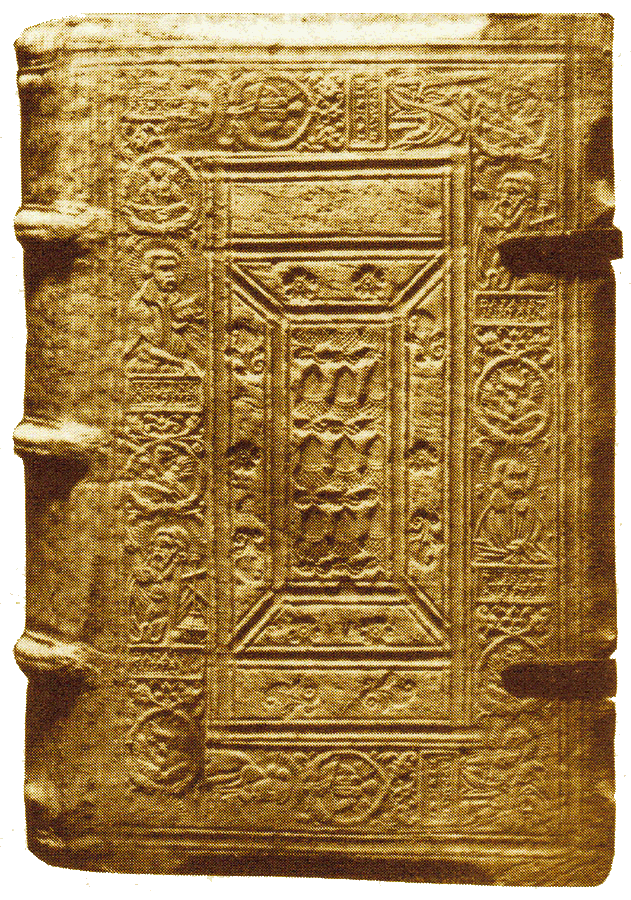
Dionysios Areopagita
Opera omnia

Johann Thomas Freigius
Quaestiones physicae

Desiderius Erasmus Roterodamus
Colloquia, Gespräche
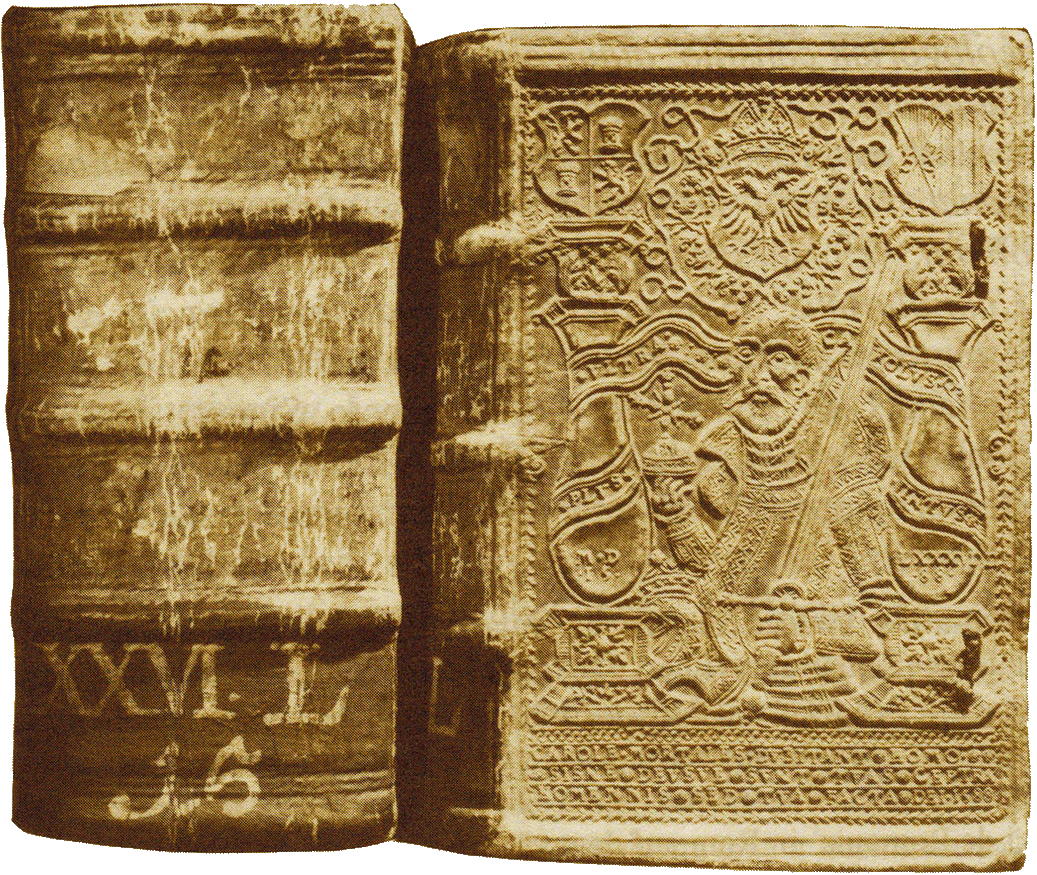
Jan Gruter
Animadversiones in L. Annaei Senacae Opera
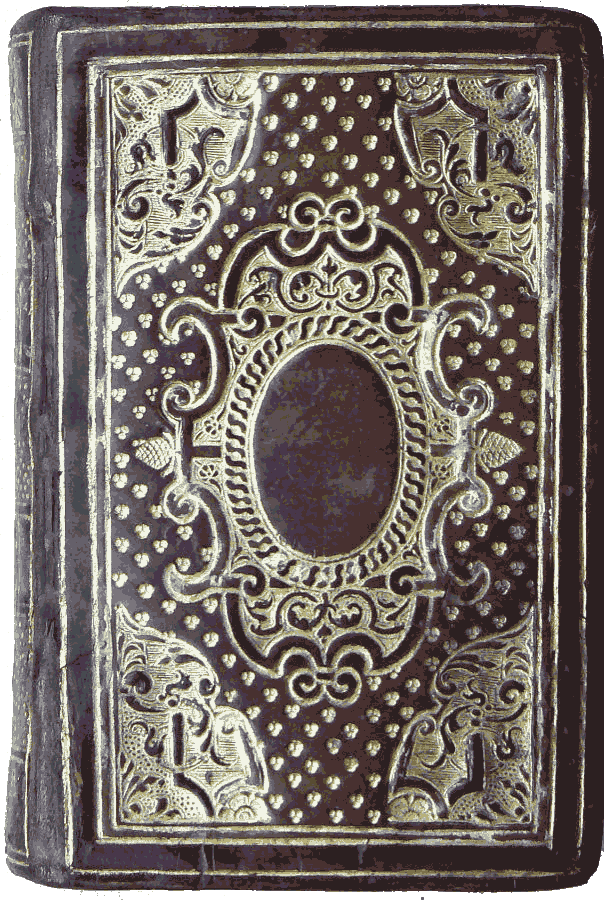
Il nuovo ed eterno testamento di Giesu Christo
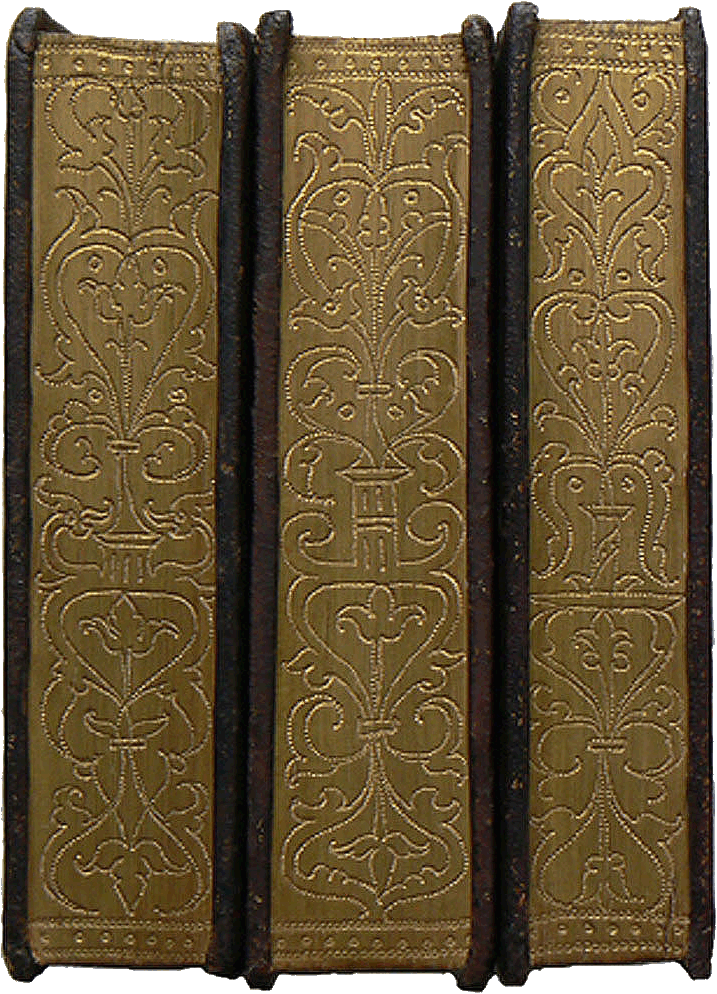
Marcus Tullius Cicero
Epistolae familiares
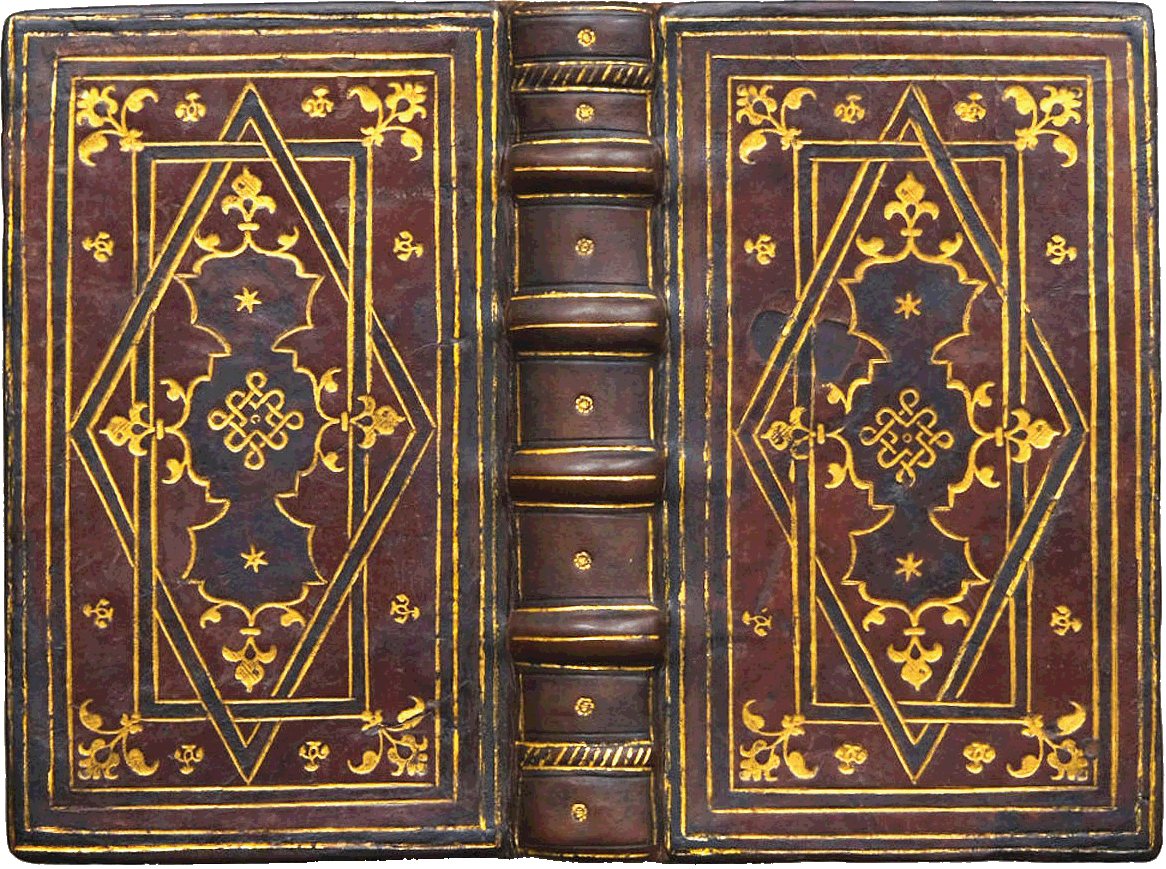
Während Bibliophile seit langem Grolier-Einbände sammelten, entschwanden einige der Namen jener Buchbinder, von denen sie hergestellt waren. Der Katalog der British Library schreibt Picard einige Einbände zu, die sich fast alle um Bücher, die gegen 1540 in Paris für Grolier bestimmt waren, befinden. Die Bibliothèque nationale de France verfügt über eine umfangreichere Sammlung.
Zahlreiche der Einbände Picards befinden sich um Exemplare des venezianischen Aldus-Verlages. Er scheint auch eine direktere Verbindung zu diesem gehabt zu haben, da ein ‚Jean Picard‘ in den 1540er Jahren die Pariser Aldus-Agentur leitete und Bücher in deren Auftrag verkaufte. Nicht alle Quellen stimmen darin überein, daß es sich bei Buchhändler und Buchbinder um dieselbe Person handelt.
Die Räumlichkeiten des Buchhändlers Picard waren mit dem Signet Anker und Delphin für festina lente, σπεῦδε βραδέως, Emblem des Aldus-Verlags, gekennzeichnet. Sie befanden sich in der Rue Saint-Jacques, einer Straße im Quartier Latin, im Zentrum des Buchhandels. 1547 wurden finanzielle Probleme gravierend, und er floh vor seinen Gläubigern wohl nach England. Der Aldus-Verlag ernannte daraufhin einen Drucker namens Le Riche zum neuen Agenten. Le Riche wurde nach einigen Jahren durch den Buchbinder Gomar Estienne ersetzt, der zwischen den Jahren 1545 und 1555 tätig war und im Atelier de Fontainebleau, der königlichen Buchbinderei, gearbeitet hatte. Estienne scheint einige der von Picard verwendeten Buchbinderwerkzeuge übernommen zu haben.
Picard ist mit einem dekorativen Stil verbunden, der als entrelacs géométriques bezeichnet wird, arbeitete jedoch auch in anderen Stilen.)
Marcus Valerius Martialis
Epigrammatom libri 14

Ξενοφῶν, Xenophon; Αἴσωπος, Aesop; Κέβης, Cebes
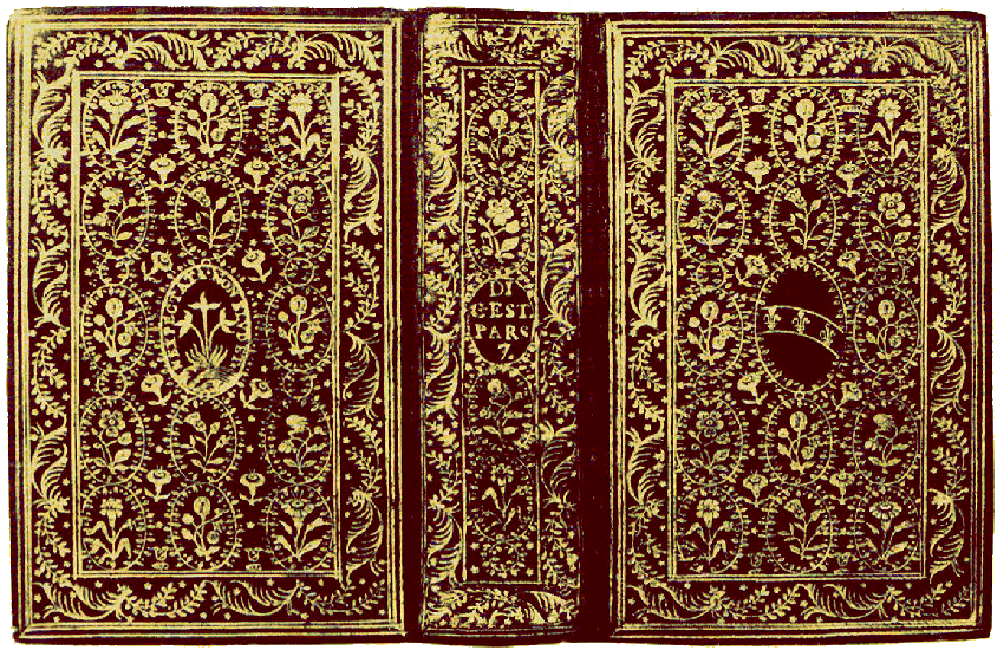
Die Zuschreibung mittels des kleinen Vasenstempels auf einigen der Duodo-Bände an das benannte Pariser ‚Atelier de la seconde Palmette‘ durch Breslauer (Cat. 104 zu n° 195) bezieht sich auf Hobson II, p. 63, n° 192 sowie n°° 102, 139, 175, 181 & 182; dies war die wichtigste Buchbinderwerkstatt, die von 1590 an ‚à la fanfare‘ band.
Duodos Einbände sind nahezu einheitlich mit einem die Fläche vollständig bedeckenden Design vergoldet, das teils achsensymmetrisch, teils symmetrisch zum Deckelmittelpunkt aus meist 14 bzw. 16 ovalen Einzelstempeln mit verschiedenen Blumen besteht. Die Farbe des Maroquins steht für Sachgebiete: gelb für wissenschaftliche, medizinische und botanische Texte; rot für religiöse, philosophische, juristische und historische; oliv für die Literatur. Der Vorderdeckel trägt stets zentral das Wappen, drei Lilien in einem abwärts gebogenen Band, welches lange Zeit Marguerite de Valois zugeschrieben wurde, wohl weil ihre von Clovis Eve gebundenen Bände ein ähnliches „semis de Marguerites“ aufweisen. Auf dem Hinterdeckel an gleicher Stelle in ovalem Feld eine dreiblütige Lilie auf kleinem Hügel sowie oben das Motto „Expectata non eludet“. Doch selbst dies Motto wirft Schwierigkeiten auf. Rauch: Catalogue 1, p. 34 übersetzt: „Elle ne manquera pas au rendez-vous“. Besser erscheint: „Er wird den erwarteten (Dingen) nicht ausweichen“. Um die wiederholten oval gerahmten Blütenstempel zieht sich außen stets ein Rahmen aus Palm- und Olivenblättern.
Duodos Einbände amalgieren Elemente des damals in Paris üblichen Stils: das semé aus ovalen Lorbeer-Umgrenzungen, kleine Blumen-Stempel und die Rahmen-Stempel aus Zweigen; diese Stempel erscheinen jedoch feiner als ähnliche der Zeit, wie z.B. jene auf für Nicolas de Villars gebundenen Werken. (Cf. Rauch: Brunschwig, 368).
Seine Bibliothek blieb für 200 Jahre in Paris, ehe sie nach und nach in den Handel gelangte; ob sie je in die Hände des Auftraggebers kam, ist darum zweifelhaft. Es sind heute 90 Editionen in 133 Bänden als solche aus Duodos Besitz identifiziert; 46 rühren aus den Gebieten Theologie, Philosophie, Geschichte und Jurisprudenz, 15 aus Medizin und Botanik, 72 aus der Literatur.
Y. Devaux: Dix siècles de reliure. p. 109.
Needham: Twelve Centuries of Bookbindings. n° 98.
Hobson/Culot: Italian & French 16th-Century Bookbindings. n° 68.
Olivier 65.)
Theocriti aliorumque poetarum idyllia. Eiusdem Epigrammata
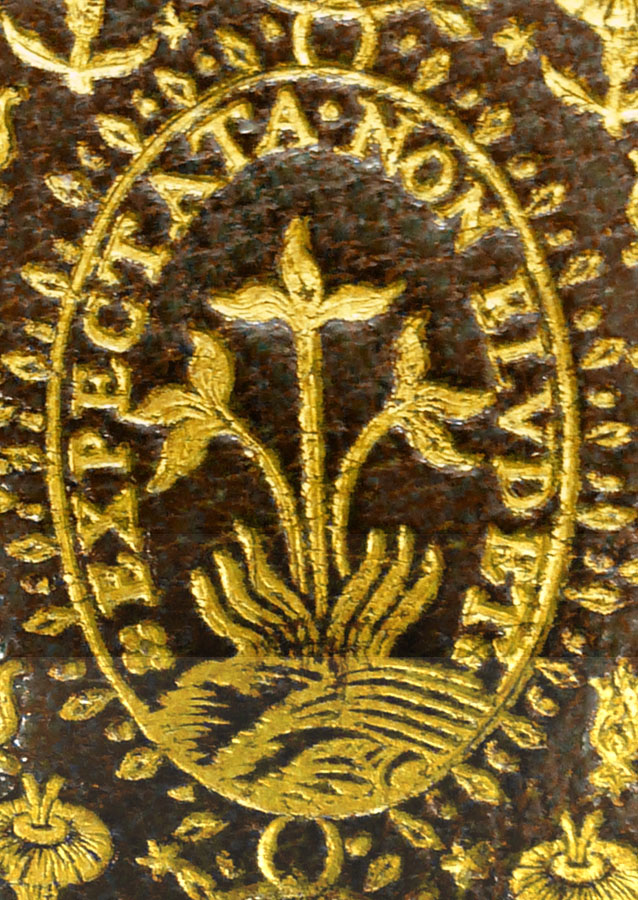
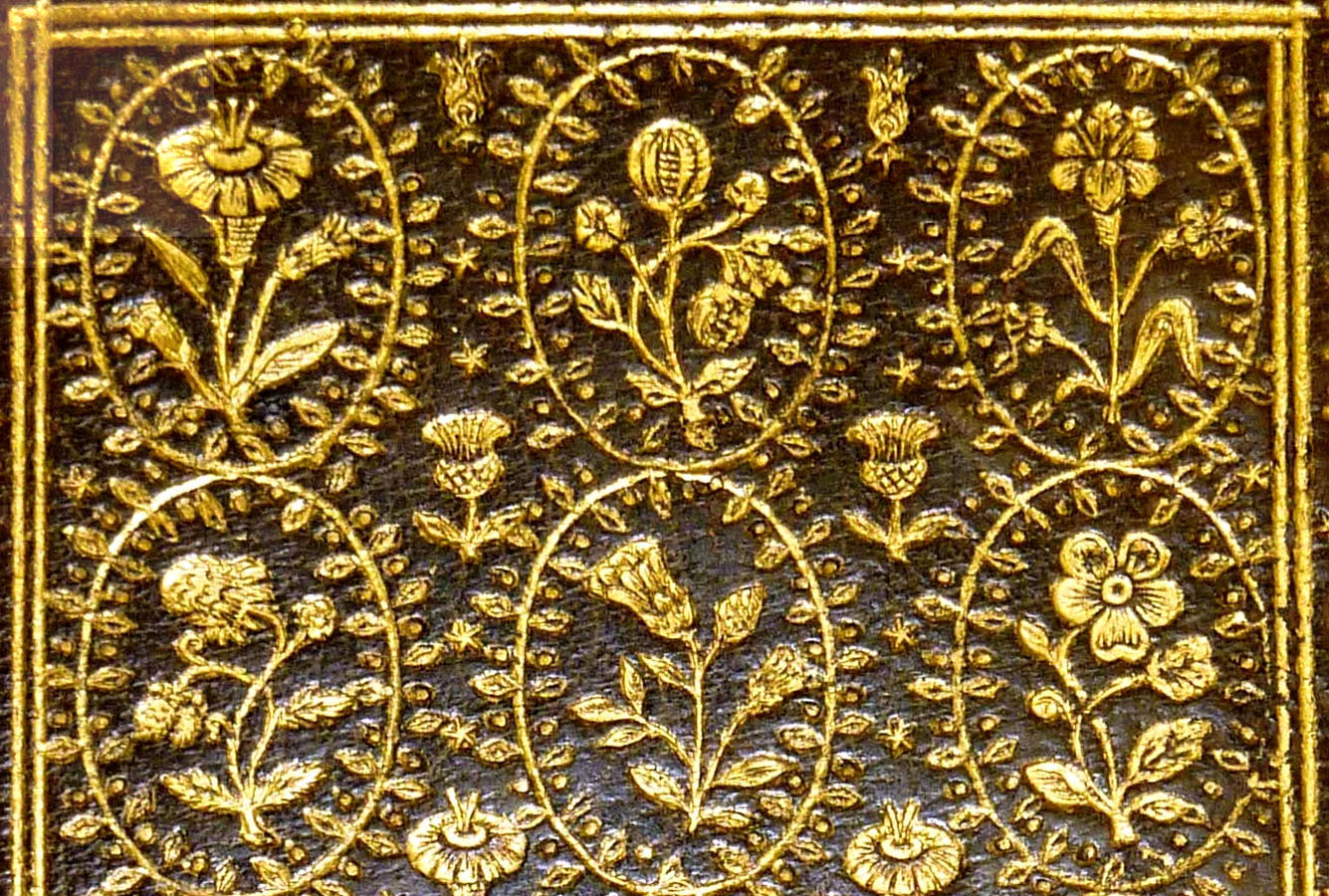

Historiarum libri

Opera quae extant omnia

De miraculis vivorum, mortuorum
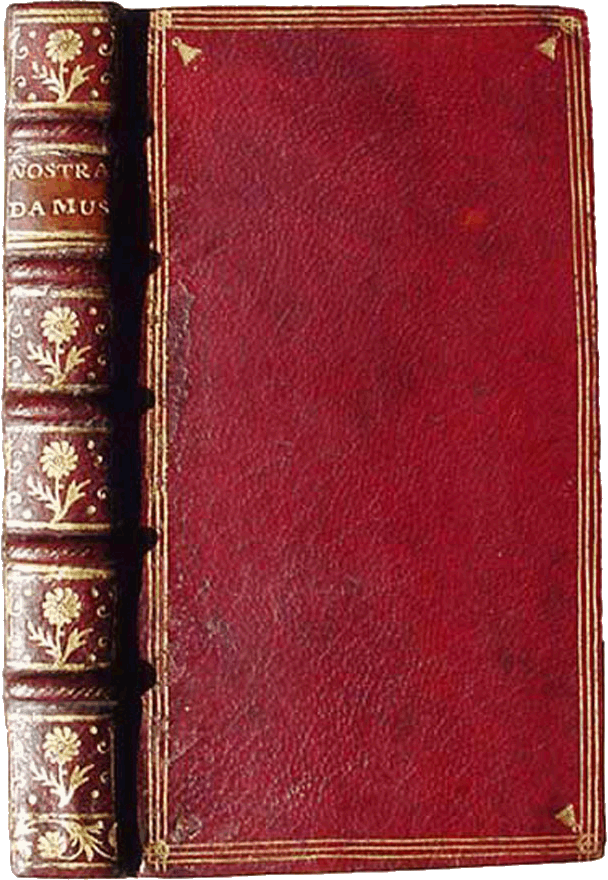
Les vrayes centuries et prophéties
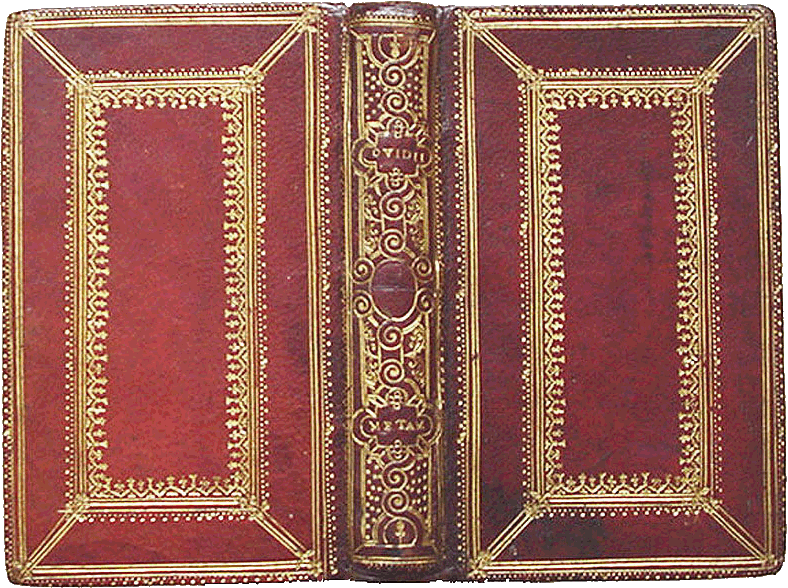
Metamorphoseon libri XV
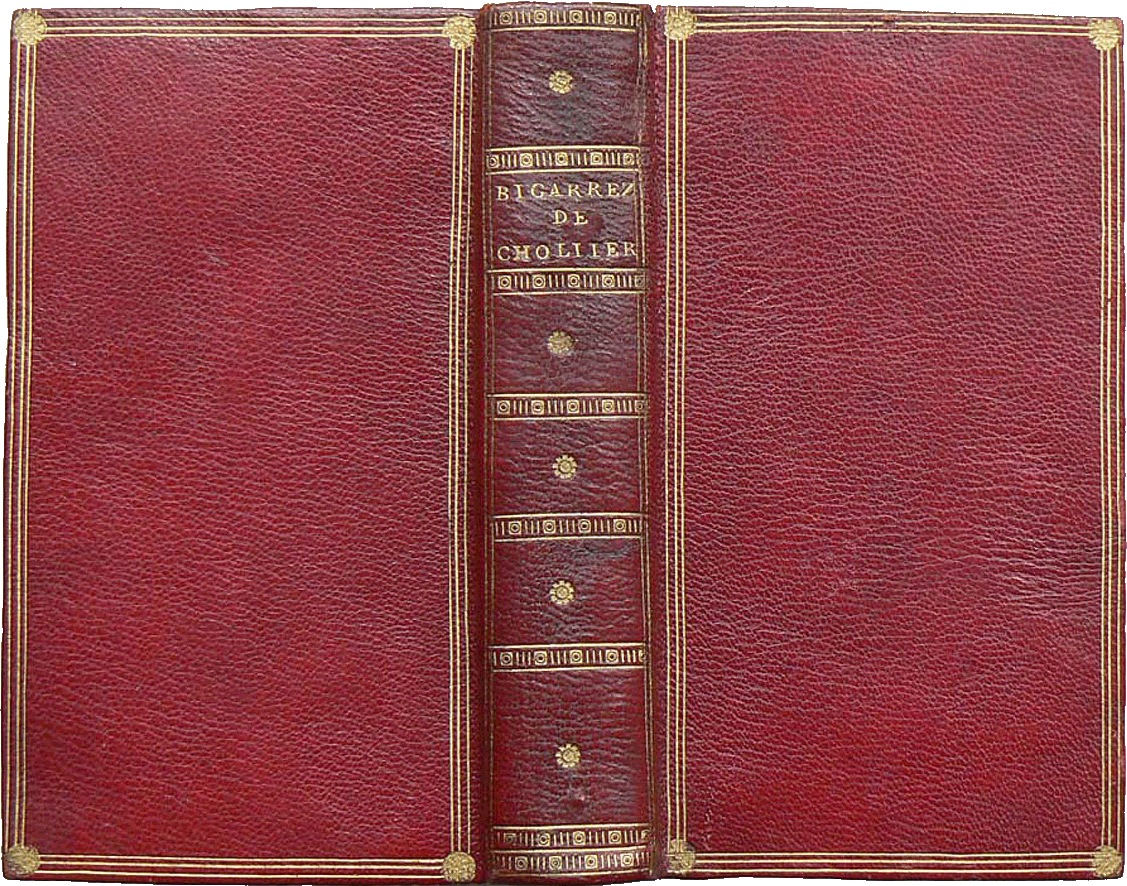
Contes, et discours bigarrez
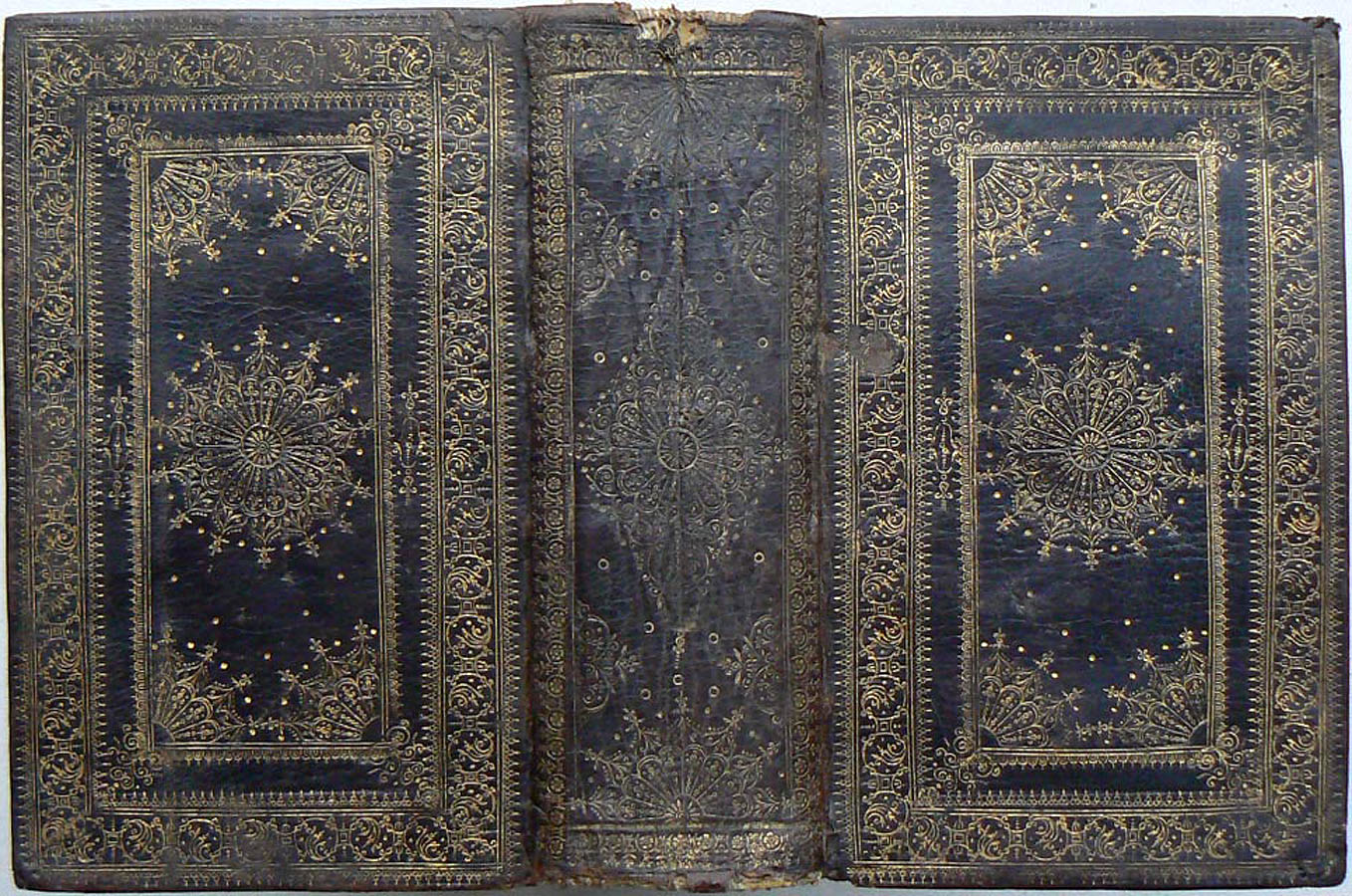
Conrad Lycosthenes alias Konrad Wolffhart
Apophthegmata
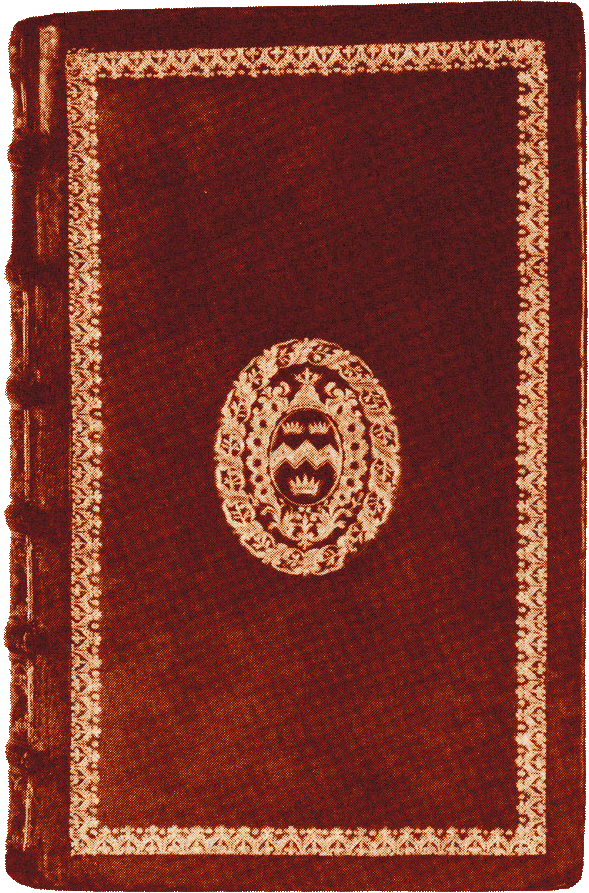
Giovanni Pontano
Opera omnia

Beschreibung der Russischen Provinzen

Αἴσωπος, Aesopus; Fabulae; Ὡϱαπόλλων, Horapollon; Hieroglyphica

Bernard Lamy
Nouvelles Reflexions sur l’art poétique
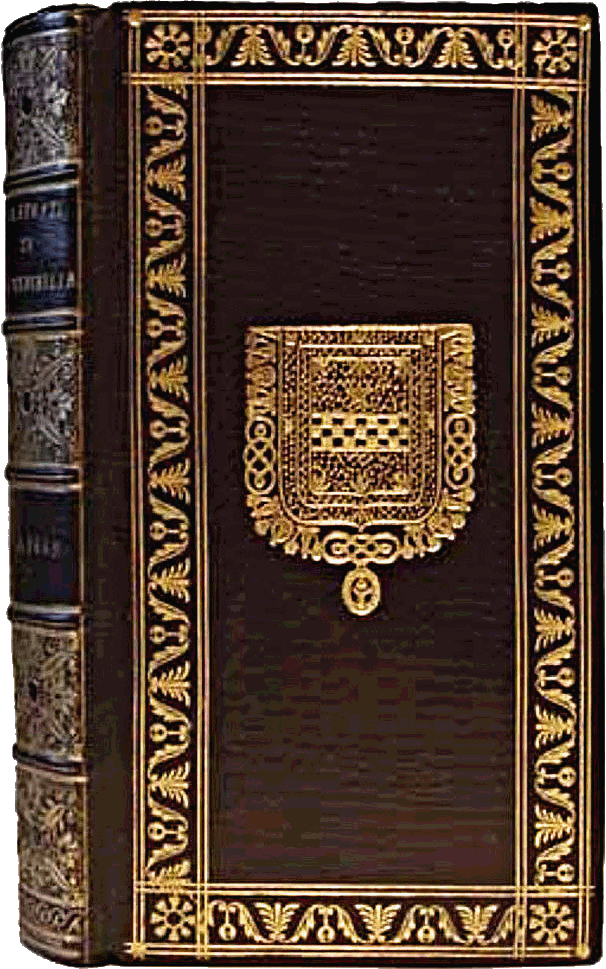
Παλαίφατος — Palaephatus
Περὶ ἀπίστων — De incredibilibus
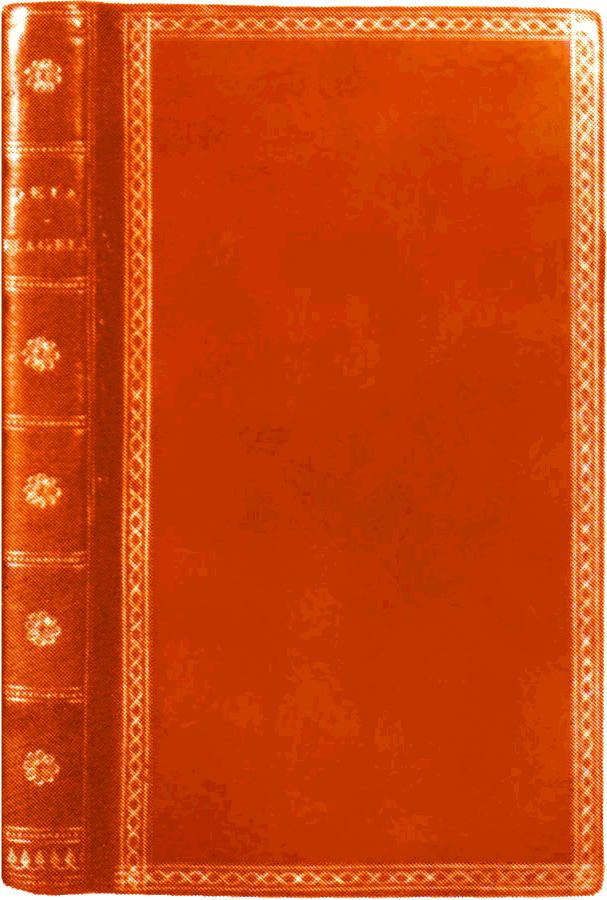
Ioannes Henricus Meibomius et Claude-François-Xavier Mercier
De l’utilité de la flagellation
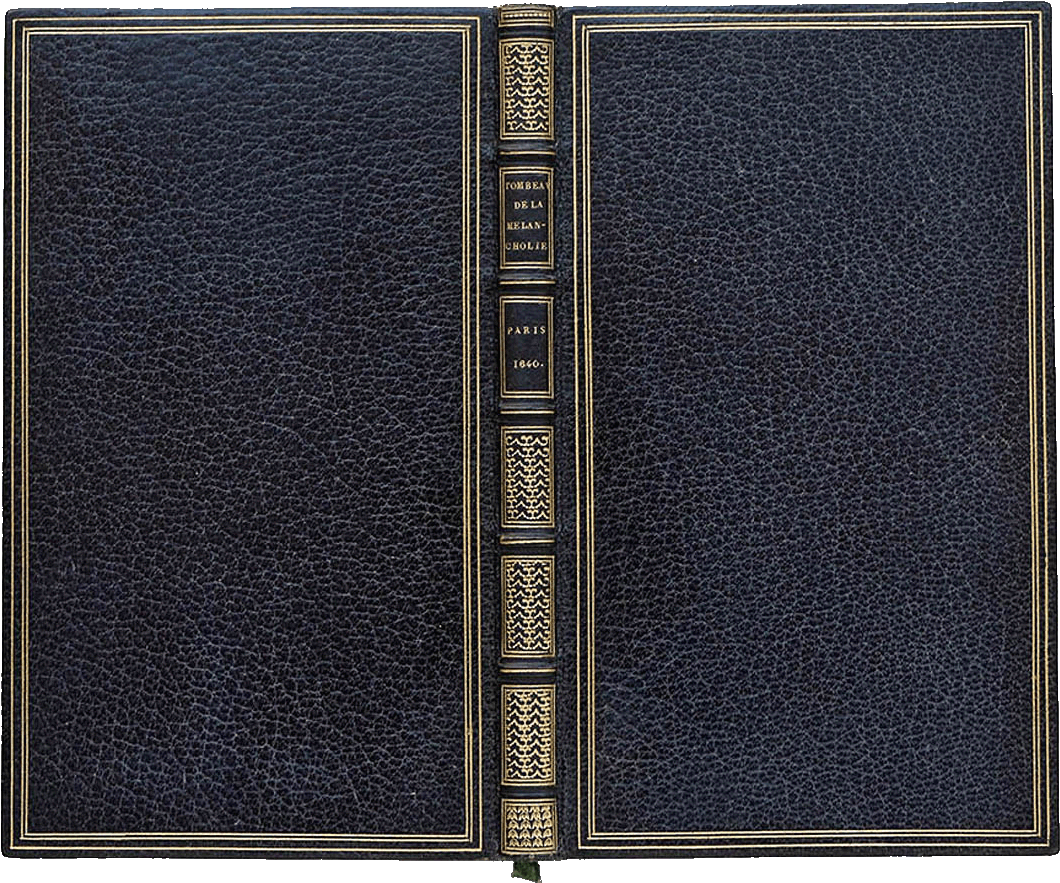
Guillaume Du Vair
Le tombeau de la mélancholie. Ou le vray moyen de vivre joyeux
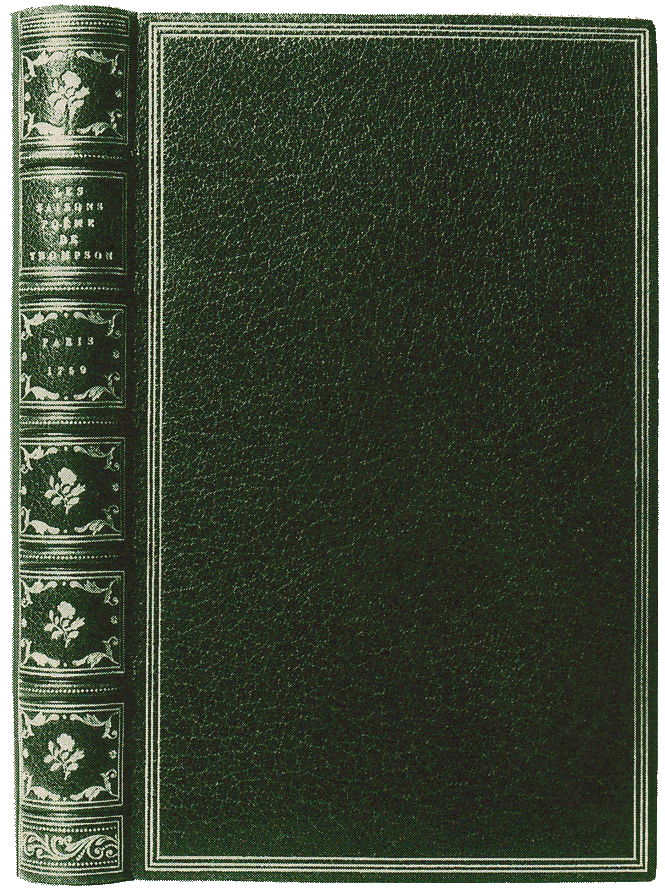
James Thomson
Les Saisons
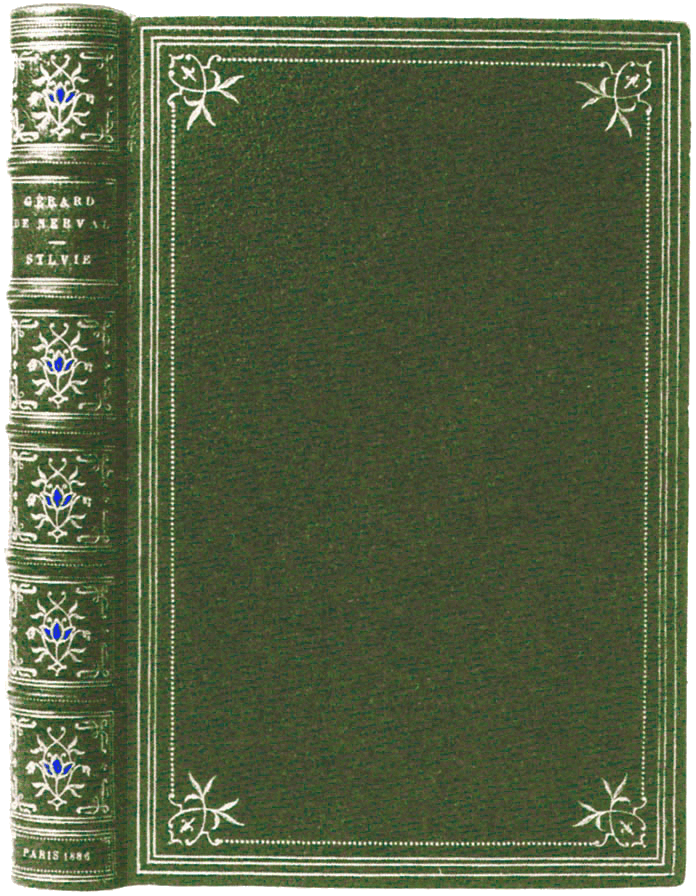
Gerard de Nerval
Sylvie

Λόγγος, Longos
Les amours pastorales de Daphnis et de Chloé
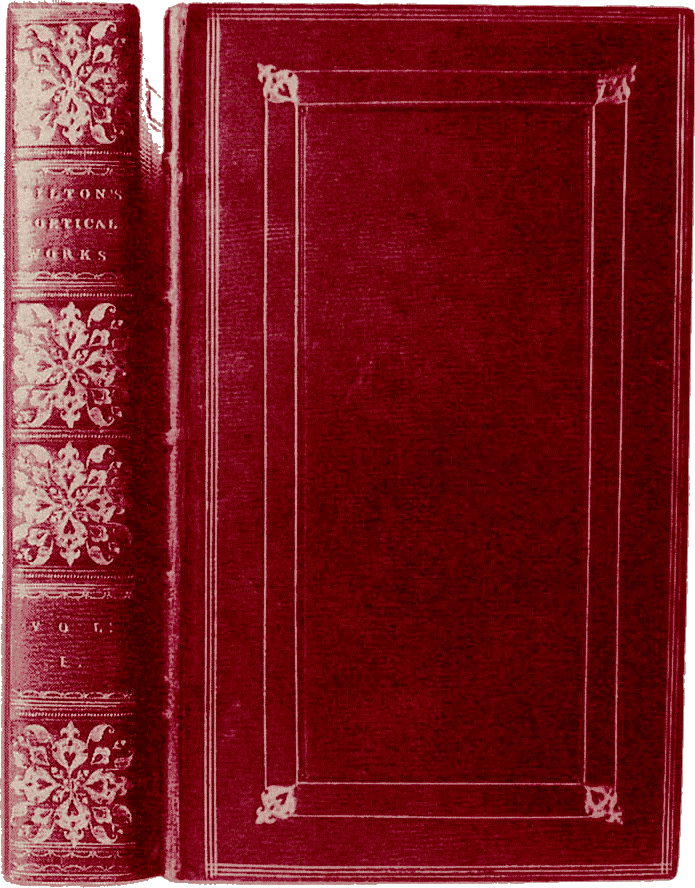
John Milton
Paradise Lost and Paradise Regained
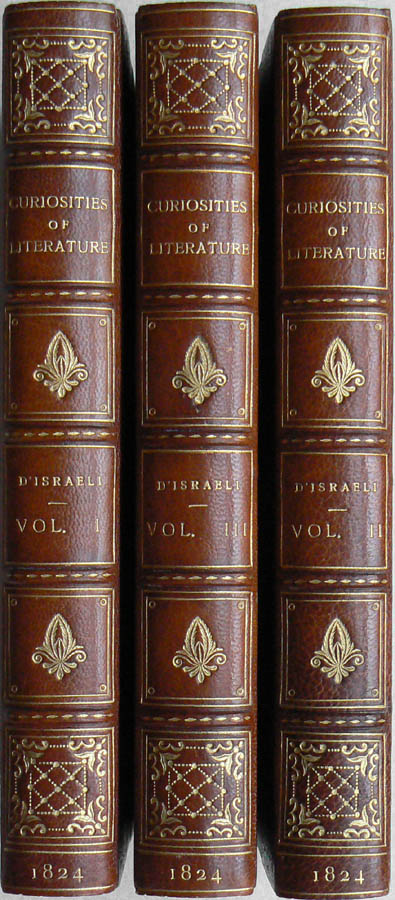
Isaac D’Israeli
A Second Series of Curiosities of Literature
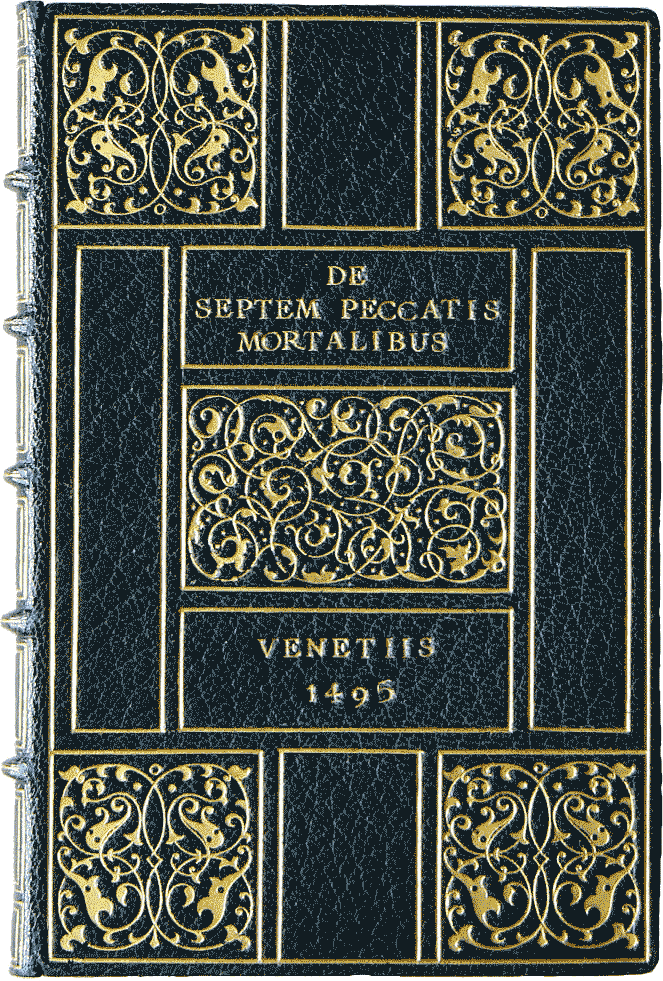
De septem peccatis mortalibus
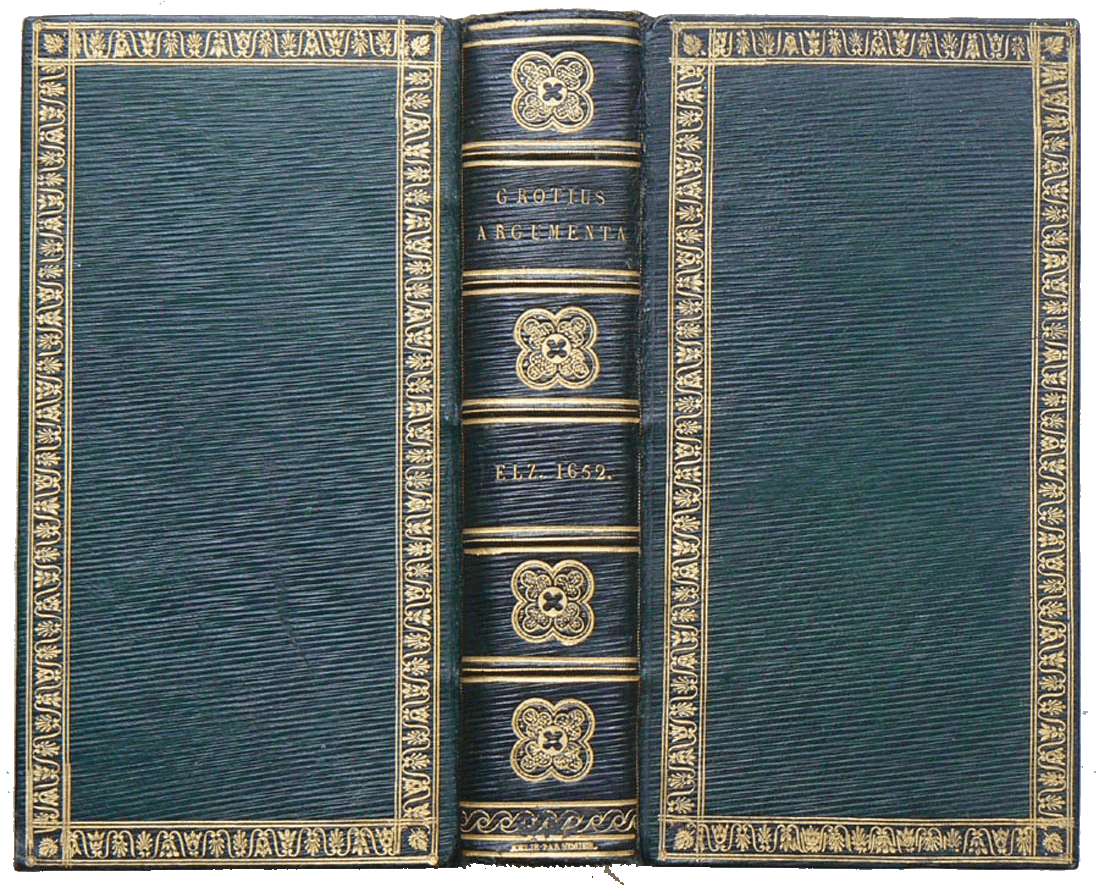
Hugo Grotius
Quaedam hactenus inedita, aliaque ex Belgicè editis Latinè versa

Adam Gottlob Oehlenschläger
Aladdin oder die Wunderlampe
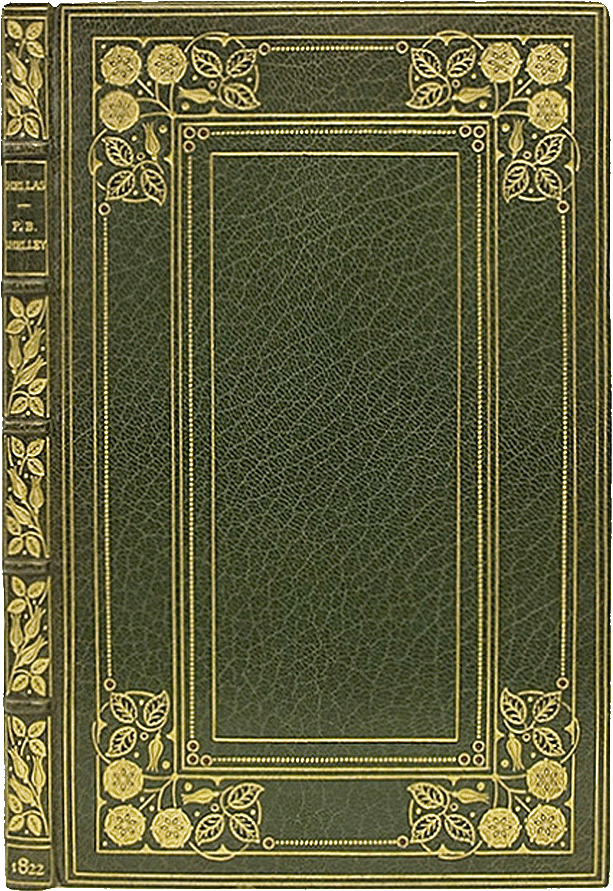
Percy Bysshe Shelley
Hellas. A Lyrical Drama

Percy Bysshe Shelley
Prometheus Unbound And Poems
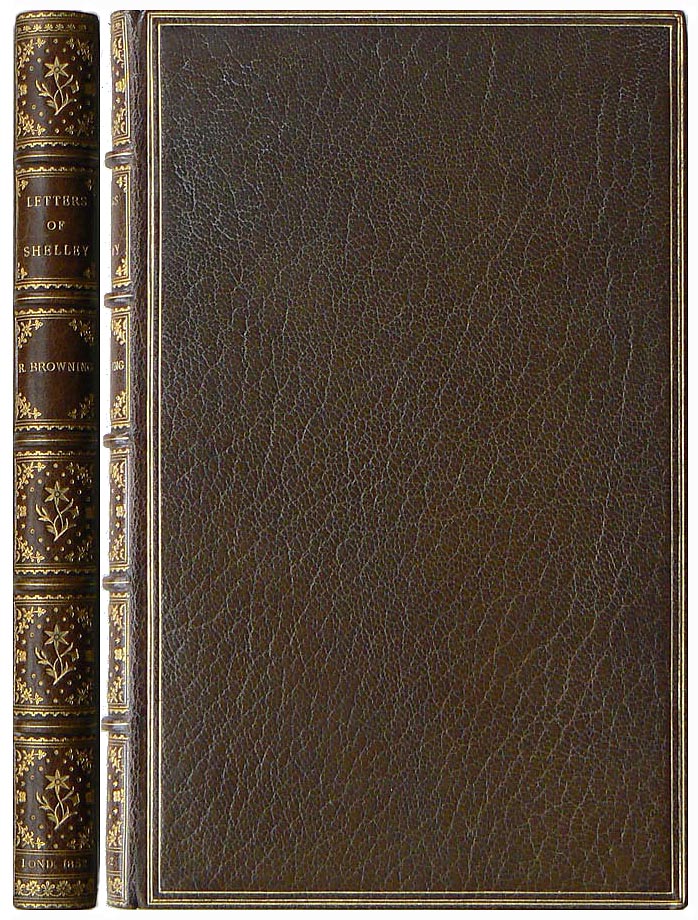
Letters of Percy Bysshe Shelley. With an Introductory Essay by Robert Browning

William Shakespeare
Venus and Adonis

Charles Marie René Leconte de Lisle
Les Érinnyes, Tragédie antique
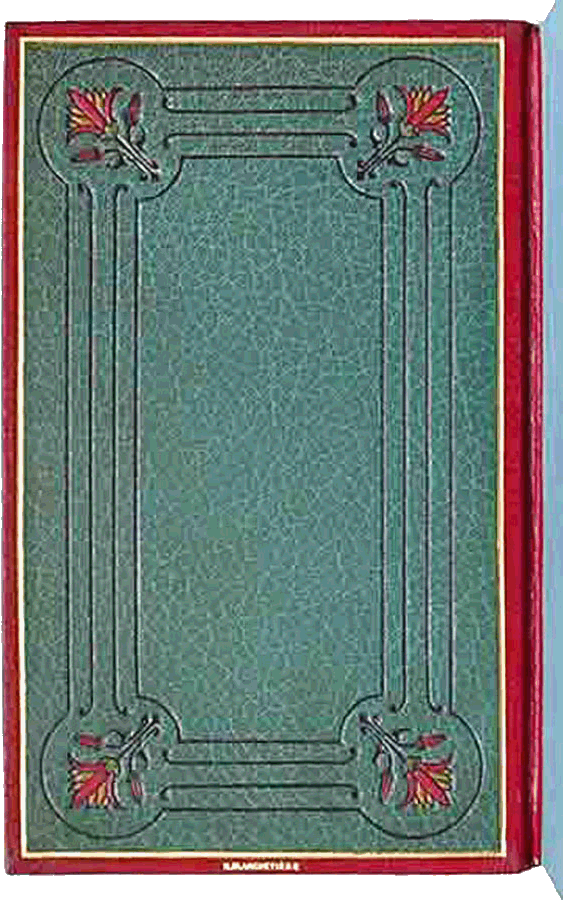
Anatol France i. e. François Anatole Thibault
Thais
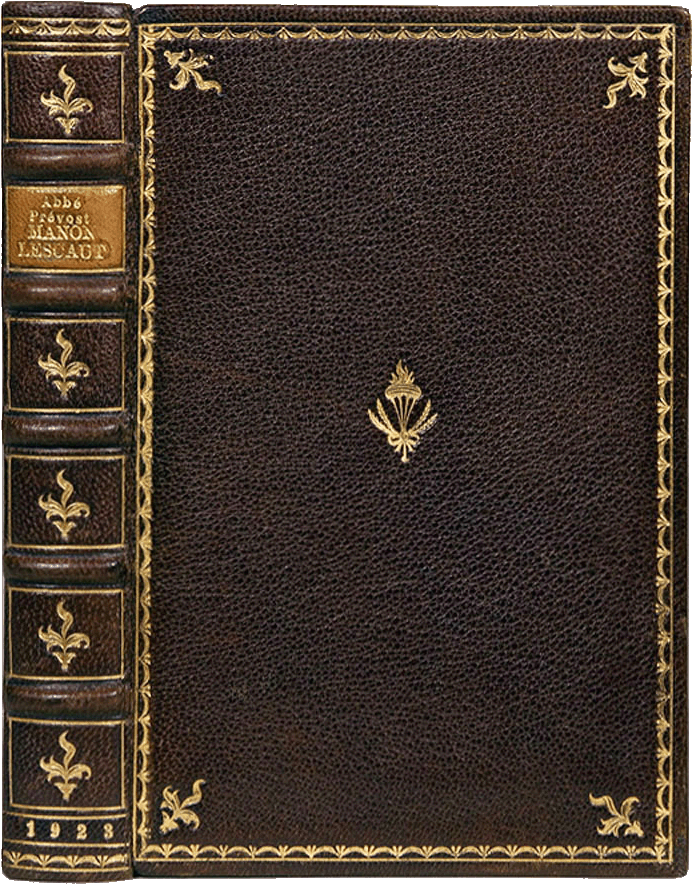
Antoine François Prévost d’Exiles
Die Geschichte der Manon Lescaut und des Chevalier des Grieux
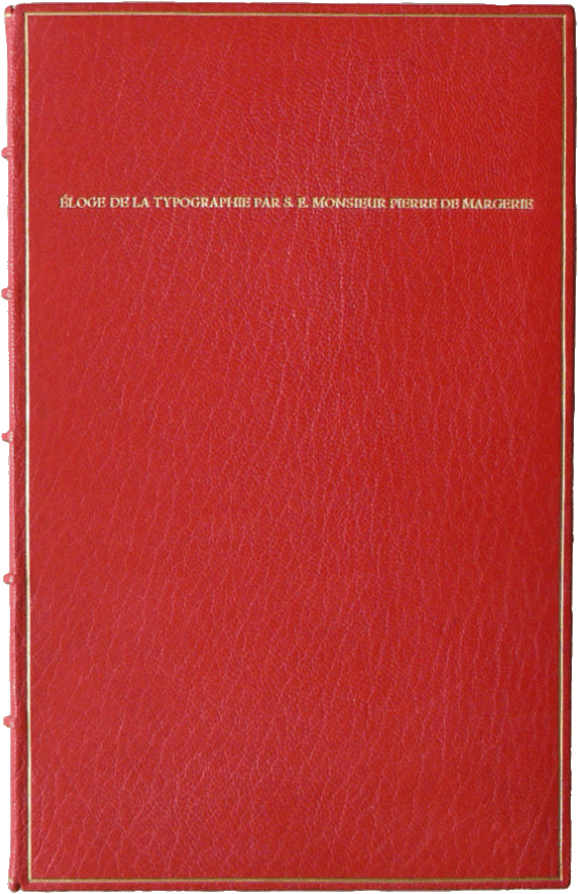
Pierre de Margerie
Éloge de la Typographie
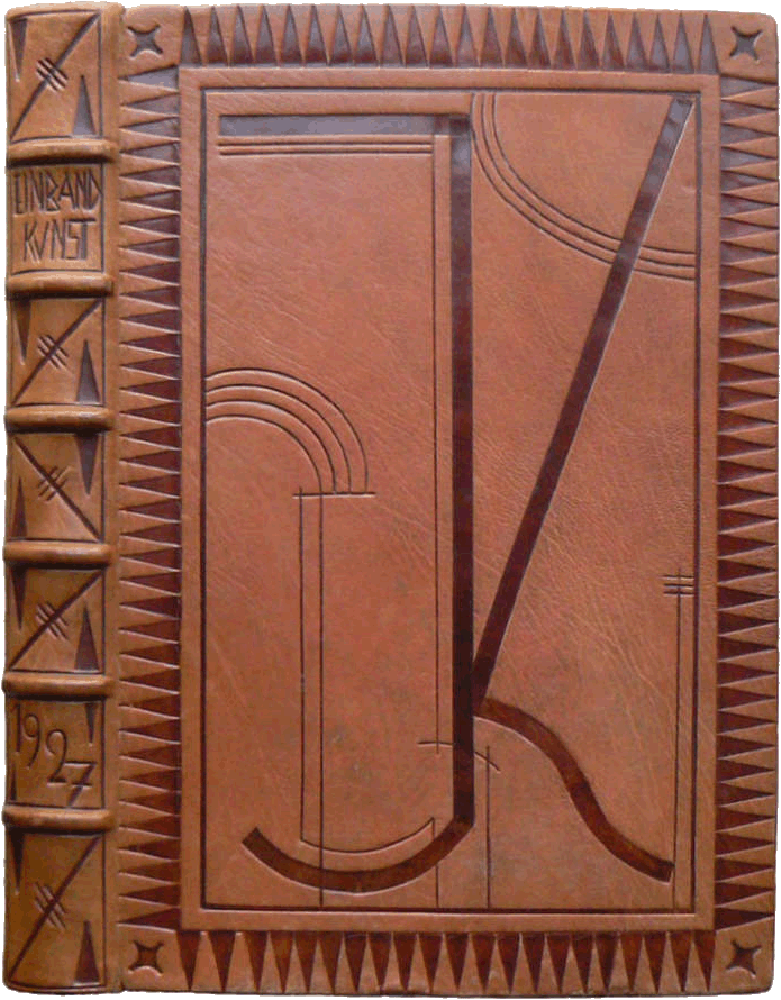
Hans Loubier und Erhard Klette
Jahrbuch der Einbandkunst
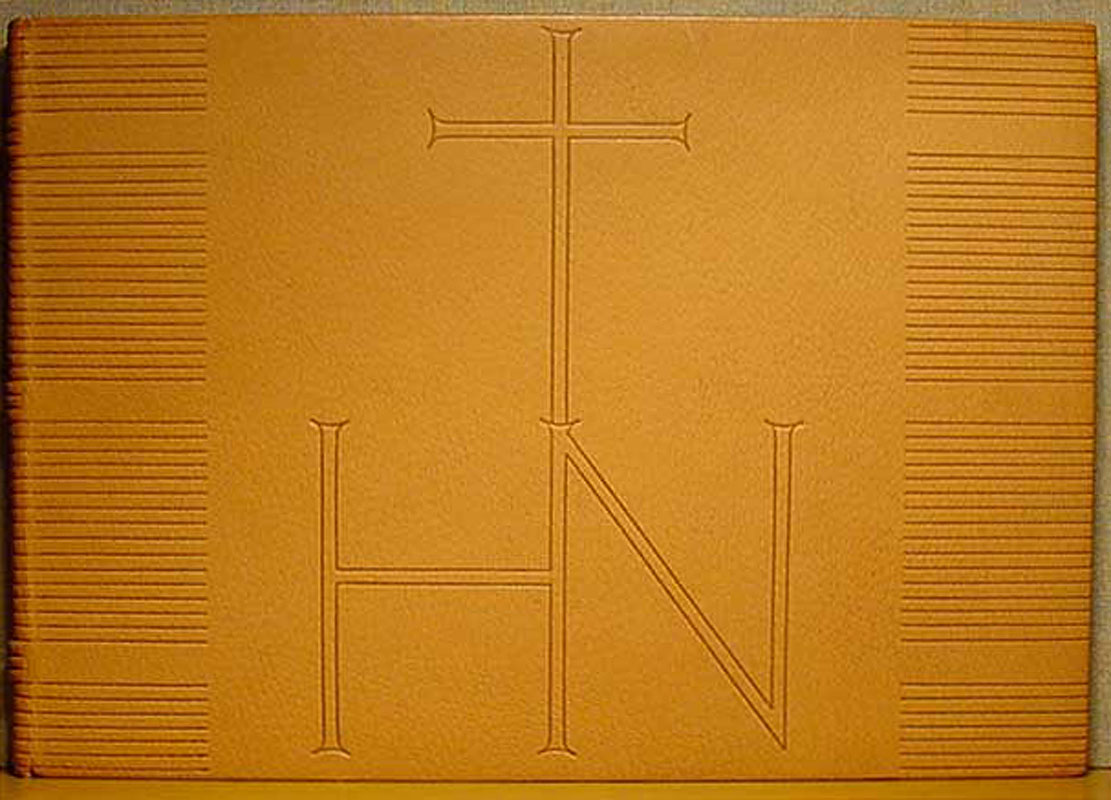
Johann Neudörffer d. Ä.
Der große Schreibmeister der deutschen Renaissance

Denis Diderot
La réligieuse
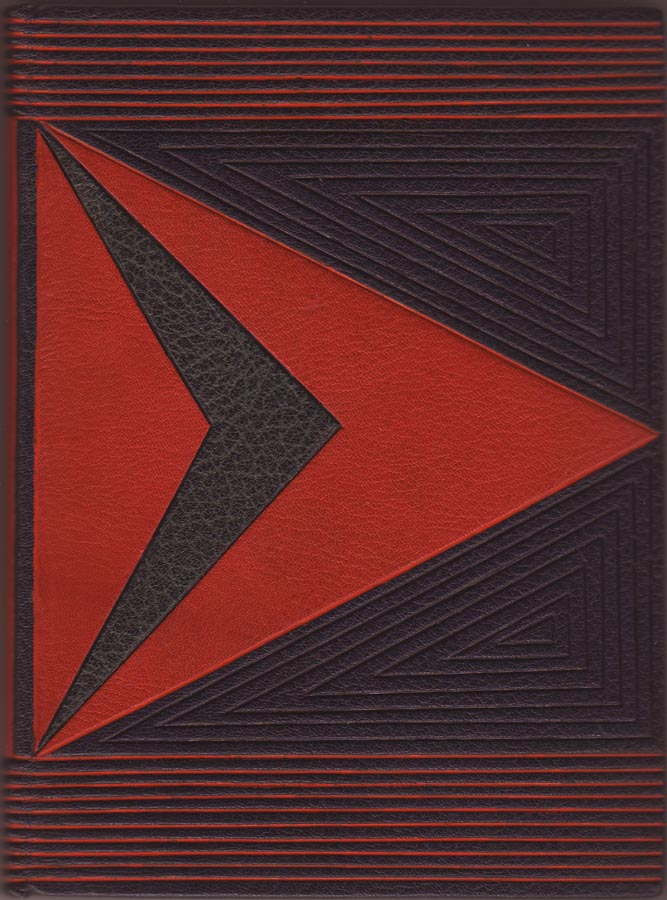
Max Horkheimer
Anfänge der bürgerlichen Geschichtsphilosophie

Dogen Zenji
The Shobogenzo

History of Maggs Bros.

Walter Gerlach
Photographien von Meistereinbänden

Beutelbuch
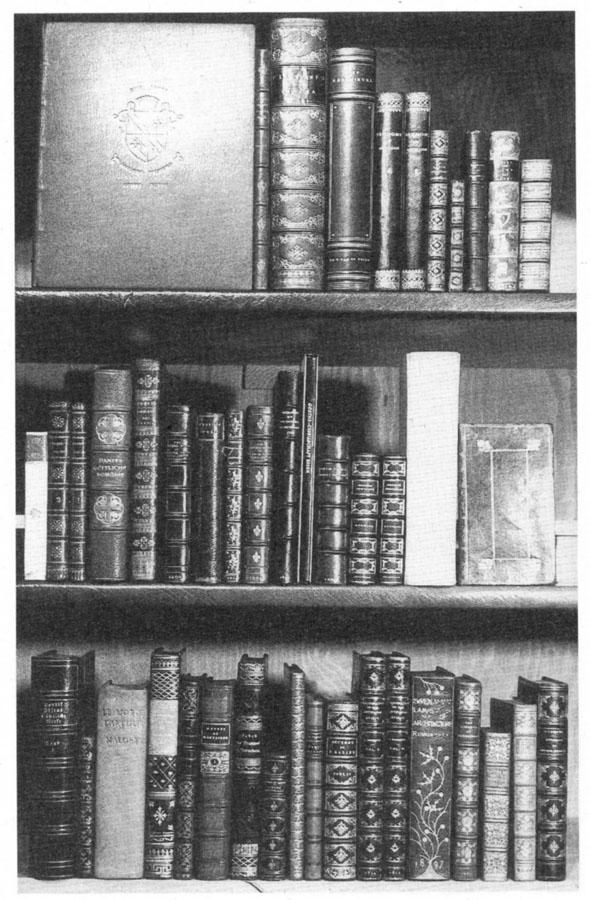
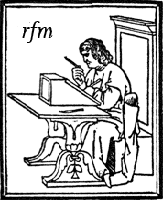
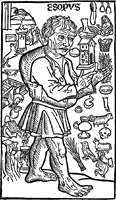


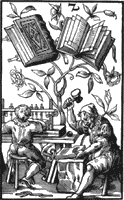
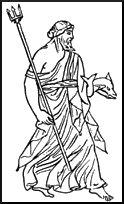
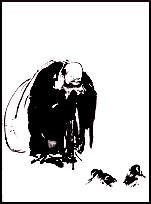
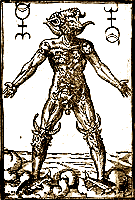
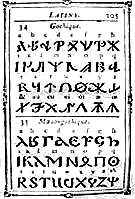
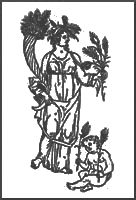
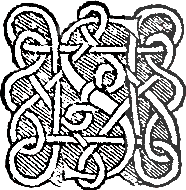 o, occasionally some one may have a book to which he is for some reason greatly attached, and wishing to enshrine it, give the binder a free hand to do his best with it. The binder may wish to make a delicate pattern with nicely-balanced spots of ornament, leaving the leather for the most part bare, or he may wish to cover the outside with some close gold-tooled pattern, giving a richness of texture hardly to be got by other means. If he decides on the latter, many people will say that the cover is over-decorated. But as a book cover can never be seen absolutely alone, it should not be judged as an isolated thing covered with ornament without relief, but as a spot of brightness and interest among its surroundings. If a room and everything in it is covered with elaborate pattern, then anything with a plain surface would be welcome as a relief; but in a room which is reasonably free from ornament, a spot of rich decoration should be welcome.
o, occasionally some one may have a book to which he is for some reason greatly attached, and wishing to enshrine it, give the binder a free hand to do his best with it. The binder may wish to make a delicate pattern with nicely-balanced spots of ornament, leaving the leather for the most part bare, or he may wish to cover the outside with some close gold-tooled pattern, giving a richness of texture hardly to be got by other means. If he decides on the latter, many people will say that the cover is over-decorated. But as a book cover can never be seen absolutely alone, it should not be judged as an isolated thing covered with ornament without relief, but as a spot of brightness and interest among its surroundings. If a room and everything in it is covered with elaborate pattern, then anything with a plain surface would be welcome as a relief; but in a room which is reasonably free from ornament, a spot of rich decoration should be welcome.